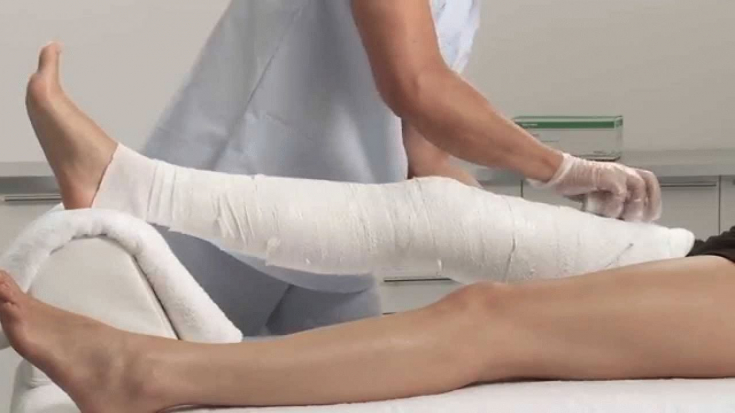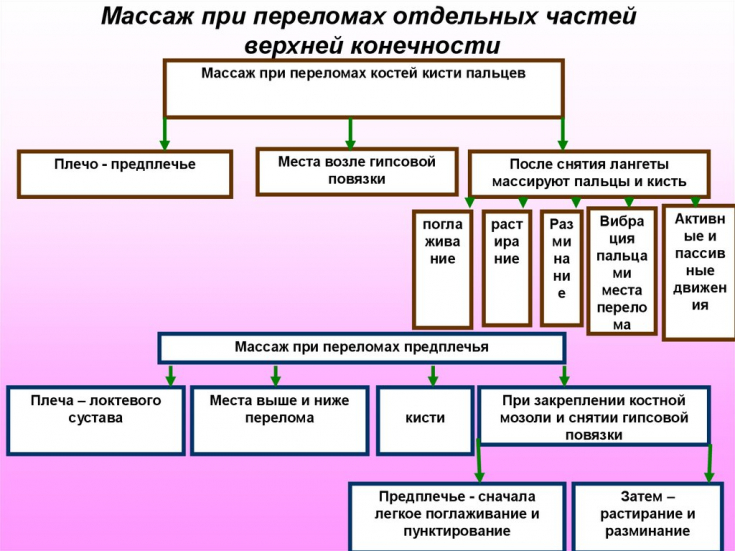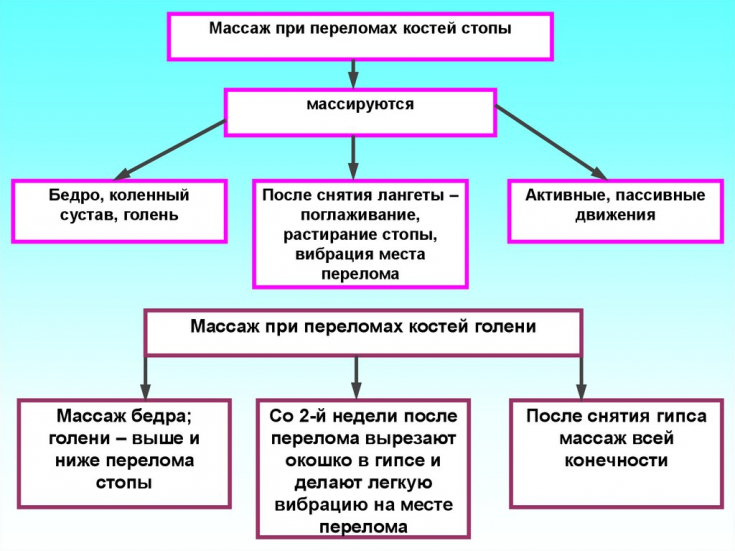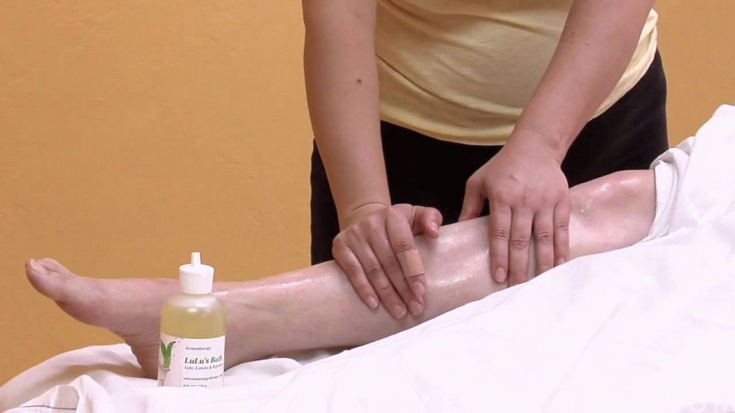Fracture – complex injury requiring a long rehabilitation process. During this period, it is important to provide the patient with all the necessary conditions for his speedy recovery. Not the last role in this is played by massage for fractures. It helps in the process of restoration and fusion of bone tissue. Of course, massage can only be done with a closed fracture. This procedure is often entrusted to a specialist, but not always and not everyone has the opportunity to pay for the services of a massage therapist and his arrival at home.
The editors of estet-portal.com will talk about how useful massage is after a fracture and how to do it correctly.
- Massage after a fracture: why it is necessary
- Massage after a fracture: how to do it right
- Is it possible to do massage after a fracture: are there any contraindications
Massage after a fracture: why it is necessary
With a closed fracture, massage is recommended to be done already on the second or third day after the person was hospitalized with an injury. At such an early stage, this procedure helps relieve pain, improves blood circulation in the injured area, and maintains muscle tone.
Subscribe to our page on Facebook!
Fusion of a broken bone – it is a lengthy process. Often a person is forced to be a long time without movement. Or – he can't move just the broken limb. During this period, the muscles have time to wean from physical exertion, to weaken.

If the recovery period is delayed – there is a risk of muscle atrophy. To prevent this from happening, massage is necessary. What is its specific use:
1. Due to the plaster cast, soft tissue is squeezed, which impairs the outflow of lymph and blood circulation. To avoid this, you need to do a massage, because the process of fusion largely depends on the blood supply to the area.
2. Massage improves the conductivity of nerve fibers, which speeds up the recovery process.
3. This is an excellent prevention of congestion in soft tissues – this applies both to a particular limb and to cases where, due to a fracture, a person is bedridden for a long time.

Thus, massage for fractures allows you to normalize blood circulation and lymph flow, prevent congestion, accelerates the process of bone tissue fusion.
Read also: Fractures bones in children: we provide first aid
Massage after a fracture: how to do it right
There are five main techniques in massage – stroking, rubbing, kneading, tapping and vibration. Each of them is important in its own way, so it is necessary to combine techniques in such a way as to influence the affected area in a complex way.

And now let's talk about each technique in more detail:
1. Stroking – massage begins with them, since in the process of these manipulations the skin gets rid of the dead epidermis, the sweat glands open, the nutrition and breathing of the skin improves. At the same time, the hands should fit snugly against the surface of the skin, slowly and rhythmically glide over it. Important – movements should be along the venous and lymphatic outflow.
2. Rubbing – It has a positive effect on the nutrition of tendons, increases the contractility of muscles and their elasticity. For rubbing, the skin is slightly pulled back with fingers to engage not only it, but also the tissues underneath. The procedure can be performed with the fingertips, the edge of the palm, in a spiral.
3. Kneading – it enhances blood circulation, deeply massages the muscles. At the same time, individual areas need to be grasped with your fingers and slightly pulled, kneaded in different directions.
4. Tapping – reduces the excitability of peripheral nerves, improves nutrition of muscle tissue. Hand movements are reminiscent of kneading dough, you can make movements with the edge of your palm, pat. This is a slight shaking of soft tissues. After it, you can supplement the procedure with light rubbing.
Read also:
Orthopedic consultation: when
Is it possible to do massage after a fracture: are there any contraindications
At the beginning of the article, we already mentioned that massage cannot be done with open fractures – but it is clear and logical. In addition, there are a number of problems in which it is impossible to massage with a fracture:
• tuberculosis of the bones in the active stage;
• inflammatory edema and extensive hemorrhage; • purulent processes;
• diseases of the joints in the acute stage;
• skin diseases in the affected area.
In this case, it is better to wait with a therapeutic massage until the disease subsides or the patient's health begins to improve.






 the person undergoing the procedure should not experience any discomfort or severe pain. This guarantees the benefit of this process for the patient, as well as complete safety for his current condition.
the person undergoing the procedure should not experience any discomfort or severe pain. This guarantees the benefit of this process for the patient, as well as complete safety for his current condition.
Add a comment